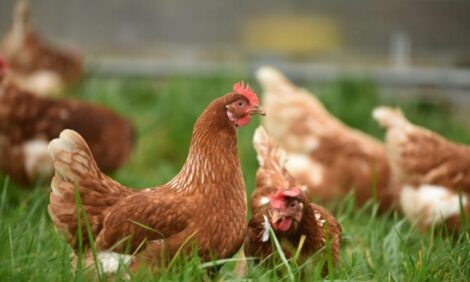



Study finds link between Campylobacter prevalence on UK farms and financial incentive, cessation of thinning
Researchers from the Farm Animal Initiative (FAI), 2 Sisters Food Group and Hook 2 Sisters, have conducted a study which links the prevalence of Campylobacter with financial incentives for biosecurity and the cessation of flock thinning on UK broiler farms.jpeg)
The study was undertaken by Laura Elizabeth Higham (FAI), Carly Scott (FAI), Ashleigh Bright (FAI), Kevin Akehurst (2 Sisters Food Group), Daniel Dring (2 Sisters Food Group), Michelle Waterman (2 Sisters Food Group) and Alan Parnham (Hook 2 Sisters).
Introduction
The study identifies Campylobacter as the leading cause of food poisoning in the UK, with up to 280,000 cases of illnesses and 100 deaths reported in the UK each year. 80 percent of these cases, the authors report, are caused by contaminated chicken. The introduction and transmission of Campylobacter in poultry is still under investigation, but of the most important factors affecting counts of the bacteria is whether the birds became colonised before or after slaughter.
Because all the details surrounding introduction and transmission are not yet known, industry faces obstacles in developing and selecting evidence-based solutions to controlling colonisation of poultry with Campylobacter. This study, however, investigates certain aspects of production which may affect risk from the bacteria, with the practice of flock thinning in the spotlight.
Statistics
- In 2013 the UK's Food Standards Agency refreshed their strategy on reducing the number of birds heavily colonised by Campylobacter from 27 percent of birds in 2008 to 10 percent in 2015
- In 2016, 50 percent of chickens at retail were contaminated and 9.3 were heavily contaminated
Main conclusions
Financial incentive
The study showed that financial incentive had a 54 percent reduction in the odds of being highly contaminated with Campylobacter, where 73 percent of houses tested were shown to be highly contaminated.
Temperature
Average monthly temperature increases of 1°C were shown to increase the likelihood of Campylobacter contamination on farms by 24 percent
Approach
Ninety-four farms and 759 houses were recruited into the study on October 2013. Due to commercial operating constraints, the study was implemented as a longitudinal monitoring study. Farms were compared with and without interventions (ie financial incentive or cessation of thinning) over consecutive 12-month periods.
All houses in every crop of broilers produced on participating farms were sampled by bootswab by the farmer or stockperson throughout the study period. Results on Campylobacter status of each house were reported as highly contaminated (>1000 CFUs of Campylobacter) or not highly contaminated.
Generalised linear modelling (mixed effects logistic regression models) was used to test hypotheses as to variables associated with Campylobacter status of each house.
Results
Financial incentives were significantly associated with infection status (p<0.001). A house whose farm received an incentive had a 54 percent reduction in the odds of being highly contaminated with Campylobacter.
Thinning was also significantly associated with infection status in a poultry house (p<0.001). Houses in which thinning was practiced had increased odds of infection of 309 percent.
For both the financial incentive and thinning studies, there was a significant increase in the odds of Campylobacter infection as regional environmental temperature and bird age increased (p<0.001).
Interpretation
The financial reward is likely to be associated with adherence to biosecurity measures such as the correct use of personal protective equipment and foot dips. These interventions aim to reduce the prevalence of Campylobacter by disrupting the cycles of transmission between sources of the bacteria and the birds. The results suggest that farms can reduce Campylobacter levels through the uptake and sustained implementation of existing biosecurity practices, when incentivised.
Flock thinning involves the manual catching of birds, and processing of 20-30 percent of the flock at around 35 days of age. This process could lead to the introduction of Campylobacter with catching crews and their equipment, and may cause disturbance and stress in the birds with subsequent shedding of Campylobacter.
Due to practical constraints, we were not able to include farm level factors (e.g. house type and condition, flock size) in this study. Elucidating farm level factors associated with Campylobacter prevalence as well as individual flock factors related to thinning (e.g. stocking density, weight profile) require further investigation.
Significance of findings
The results support implementation of farmer and stockperson financial incentive schemes, and cessation of thinning as part of a Campylobacter control plan in commercial broiler houses.
Notes
1 FAI Farms Ltd, The Field Station, Wytham, Oxford, UK OX2 8QJ
2 2 Sisters Food Group, 1 Colmore Row, Birmingham, UK B3 2BJ
3 Hook 2 Sisters, Cote Bampton, Oxfordshire, OX18 2EG
Click here to read the full article









